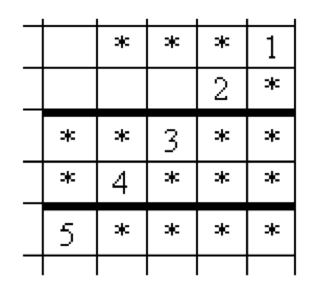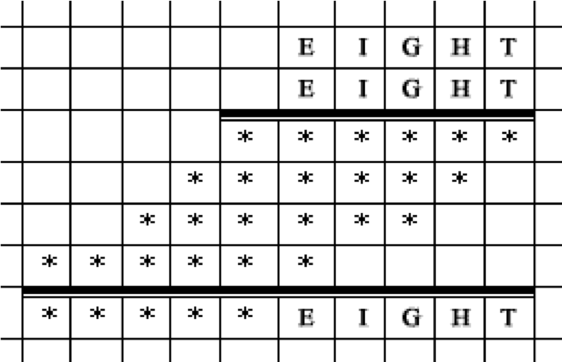Problems
Cutting into four parts. Cut each of the figures below into four equal parts (you can cut along the sides and diagonals of cells).
We are looking for the correct statement. In a notebook one hundred statements are written:
1) There is exactly one false statement in this notebook.
2) There are exactly two false statements in this notebook.
...
100) There are exactly one hundred false statements in this notebook.
Which of these statements is true, if it is known that only one is true?
Solve the rebus \(AC \times CC \times K = 2002\) (different letters correspond to different integers and vice versa).
Can the equality \(K \times O \times T\) = \(U \times W \times E \times H \times S \times L\) be true if instead of the letters in it we substitute integers from 1 to 9 (different letters correspond to different numbers)?
Rebus. Solve the numerical rebus \(AAAA-BBB + SS-K = 1234\) (different letters correspond to different numbers, but the same letters each time correspond to the same numbers)
Multiplication of numbers. Restore the following example of the multiplication of natural numbers if it is known that the sum of the digits of both factors is the same.

Restore the example of the multiplication.

What is the maximum number of kings, that cannot capture each other, which can be placed on a chessboard of size \(8 \times 8\) cells?
Prove that the number of all arrangements of the largest possible amount of peaceful bishops (figures that move on diagonals and don’t threaten each other) on the \(8\times 8\) chessboard is an exact square.
Petya and Misha play such a game. Petya takes in each hand a coin: one – 10 pence, and the other – 15. After that, the contents of the left hand are multiplied by 4, 10, 12 or 26, and the contents of the right hand – by 7, 13, 21 or 35. Then Petya adds the two results and tells Misha the result. Can Misha, knowing this result, determine which hand – the right or left – contains the 10 pence coin?